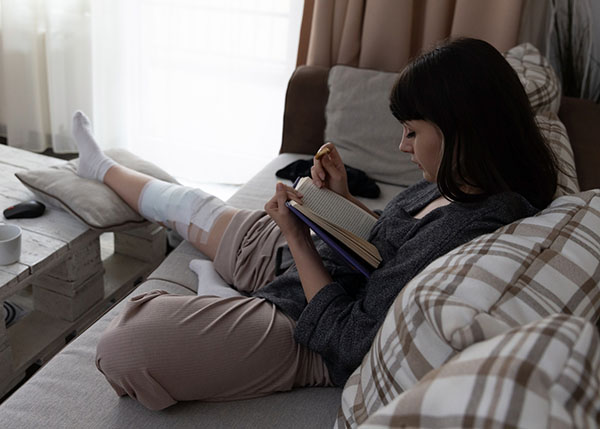ACL Reconstruction
 The ACL (anterior cruciate ligament) is a band of tissue at the center of the knee. When it is stretched or tears, it becomes damaged. A stretched ACL can heal with physical therapy over time. However, if it is torn, it will need to be replaced.
The ACL (anterior cruciate ligament) is a band of tissue at the center of the knee. When it is stretched or tears, it becomes damaged. A stretched ACL can heal with physical therapy over time. However, if it is torn, it will need to be replaced.
Surgery to repair the ACL includes removing the torn ligament and replacing it with tissue taken either from your own body or a donor. Over the next few months after surgery, the tissue heals into place and becomes the new ACL. Recovery from this outpatient procedure usually takes around six to eight months to fully heal to before injury levels, and includes rest, bracing, and physical therapy.
The majority of patients who are active with sports or at work may require anterior cruciate ligament reconstruction. Because the ACL has a very limited blood supply, it does not heal and cannot be repaired or stitched together. Surgical treatment then requires reconstruction of the ligament using a graft taken from either your own body (autograft) or a donor (allograft). The most appropriate type of graft for any individual patient is determined through an evaluation and discussion with your sports medicine physician. The appropriate graft is then threaded through the knee joint with the help of arthroscopic tools and placed where the normal anterior cruciate ligament was. The graft is secured to both the thigh bone and the lower leg bone and then biologically heals in to become the anterior cruciate ligament over the following months. Any other injuries to the knee joint are also arthroscopically evaluated and treated at the same time. This outpatient procedure often requires a period of bracing followed by a structured physical therapy program.
Following ACL reconstruction, a patient’s return to such activities as biking may occur within the first three to six weeks, treadmill running by 10 to 12 weeks, outdoor running by three to four months, and full unlimited pivoting type sports by six to eight months. Anterior cruciate ligament reconstruction allows active athletic people to return to their pre-injury level of life on a consistently high basis.

